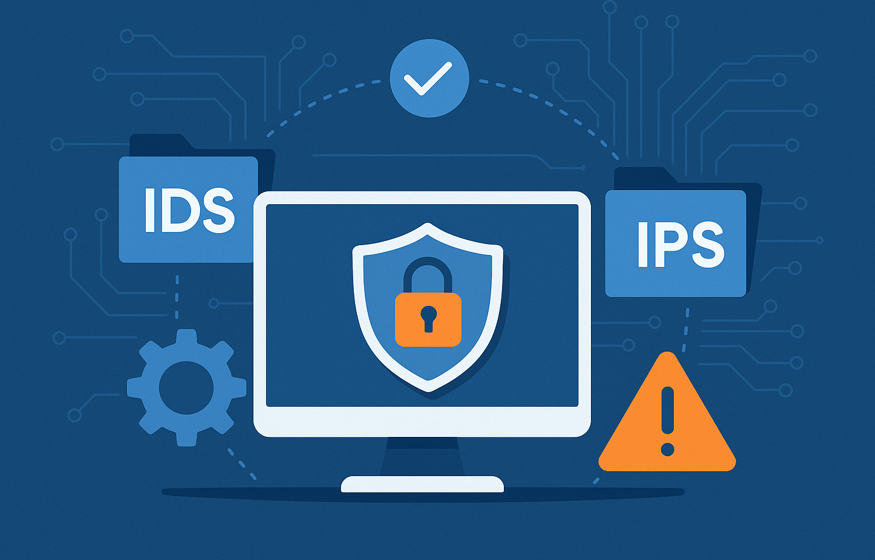Cybersecurity and Infrastructure Development
securing IT, OT and IoT Infrastructure
Committed to Excellence and Quality Result.
Blogs

Email Data Loss Prevention Strategies: A Comprehensive Guide for Australian Organizations
Email remains the primary attack vector for data breaches, with over 87,400 cybercrime reports logged in Australia during 2023-24. This comprehensive guide explores modern email Data Loss Prevention (DLP) strategies that have evolved from simple keyword filtering to AI-powered systems capable of detecting sensitive information across multiple channels. Organizations face three primary threats: accidental disclosure, intentional exfiltration, and interception attacks. Effective implementation requires a five-phase approach including assessment, policy development, technology deployment, testing, and continuous monitoring. Success depends on balancing robust security measures with business functionality while ensuring compliance with Australian Privacy Principles and sector-specific regulations.

Threat Hunting: Methodologies and Tools
Traditional reactive cybersecurity measures are insufficient against today's sophisticated threats. Threat hunting represents a paradigm shift to proactive threat detection, combining human expertise with advanced analytics to identify indicators of compromise before automated systems can detect them. With data breaches taking an average of 194 days to identify and costing organizations millions, the need for active threat hunting has never been greater. This comprehensive approach integrates strategic, operational, and tactical threat intelligence methodologies with cutting-edge tools from Microsoft, IBM, and Google to create robust defense programs that detect and neutralize advanced persistent threats before they cause significant organizational damage.

Cost-Effective Security Solutions for Limited Budgets
Small and medium businesses face escalating cyber threats with limited budgets, as 1 in 3 SMBs experienced cyberattacks in the past year with average costs of $254,445. This comprehensive guide outlines strategic, budget-friendly approaches to maximize security protection without financial strain. Key solutions include implementing multi-factor authentication ($1-3 per user monthly), automated patch management, cloud-based email security, and leveraging managed security services. A phased implementation strategy spans 12 months, starting with foundational controls (MFA, email security) for $1,700-5,000, progressing to enhanced protection ($5,000-14,000), and advanced capabilities ($8,000-21,000). Success requires balancing protection needs with financial constraints through layered defense, automation, and continuous improvement.
Backup and Recovery: Building Resilience Against Ransomware
In today’s digital landscape, ransomware has emerged as one of the most pervasive and damaging cyber threats facing organizations of all sizes. As cybercriminals continue to refine their tactics, Australian businesses find themselves increasingly in the crosshairs. The stakes couldn’t be higher: when ransomware strikes, organizations face not just financial demands but operational paralysis, reputational damage, and potentially devastating data loss.
Articles

ChatOps revolutionizes cybersecurity collaboration by integrating chat platforms with automated tools and processes, creating centralized command centers for real-time threat response. This approach addresses traditional security challenges including fragmented communication, tool sprawl, and information silos that plague modern security operations centers. By enabling natural language commands for complex security operations, ChatOps significantly reduces mean time to response (MTTR) while improving transparency and team coordination. Implementation requires careful platform selection, robust security measures, and comprehensive training programs. As cyber threats evolve, security teams adopting ChatOps methodologies gain enhanced operational efficiency, better incident management, and improved collaborative capabilities across distributed environments.

In Australia’s evolving digital landscape, effective log management has become essential for cybersecurity and regulatory compliance. With 87,400+ cybercrime reports filed in 2023-2024 and stringent legislation like the Privacy Act and Security of Critical Infrastructure (SOCI) Act, organizations must transform logs from operational byproducts into strategic security assets. This comprehensive guide outlines seven key pillars: comprehensive collection, centralization, normalization, real-time analysis, secure storage, access control, and incident response. By implementing these practices, Australian businesses can meet compliance requirements while building robust defenses against cyber threats, turning potential compliance burdens into powerful security enablers that protect valuable data and organizational reputation.

This comprehensive guide explores proven strategies for deploying Intrusion Detection Systems (IDS) and Intrusion Prevention Systems (IPS) to maximize cybersecurity effectiveness. The article covers strategic deployment architectures including network-based, host-based, and hybrid models, with emphasis on performance optimization through traffic analysis, sensor placement, and rule management. Key topics include integration with Security Operations Centers, cloud environment considerations, compliance requirements for Australian organizations, and advanced techniques utilizing machine learning and behavioral analytics. The guide addresses implementation challenges such as resource constraints and technical complexity while providing measurable KPIs for continuous improvement and future-proofing against emerging threats.

Alert fatigue has become a critical challenge for Australian cybersecurity operations, with 51% of Security Operations Centers overwhelmed by alert volume. This phenomenon occurs when security professionals become desensitized by excessive alerts, leading to decreased responsiveness and missed threats. With organizations facing 600 million daily cyberattacks globally, effective prioritization strategies are essential. Six evidence-based approaches can combat alert fatigue: leveraging threat intelligence, consolidating security ecosystems, implementing machine learning correlation, utilizing watchlists, deploying user behavior analytics, and automating routine tasks. These strategies can reduce alert volume by 30-70% while maintaining detection capabilities and improving analyst satisfaction.

Directory services, particularly Microsoft Active Directory, have become primary targets for sophisticated cyberattacks in 2025. With over 78% of human-operated attacks involving Domain Controller breaches and average breakout times dropping to just 62 minutes, organizations face unprecedented security challenges. The Australian Cyber Security Centre and international partners emphasize that Active Directory’s widespread adoption creates numerous attack vectors including credential-based attacks, lateral movement, and privilege escalation. Modern enterprises managing hybrid cloud infrastructures must implement comprehensive security measures including robust monitoring, privileged access management, multi-factor authentication, and network segmentation to protect these critical identity management systems that serve as the foundation of organizational security.
